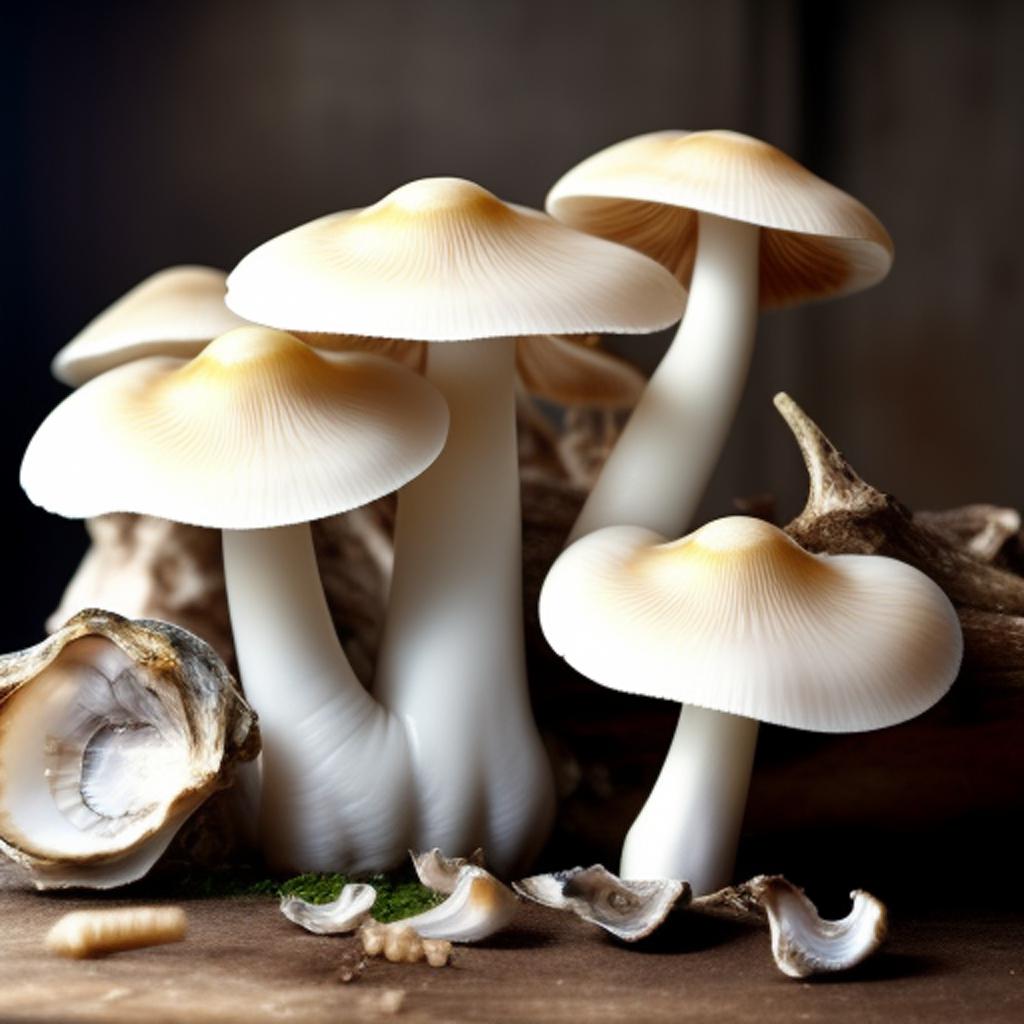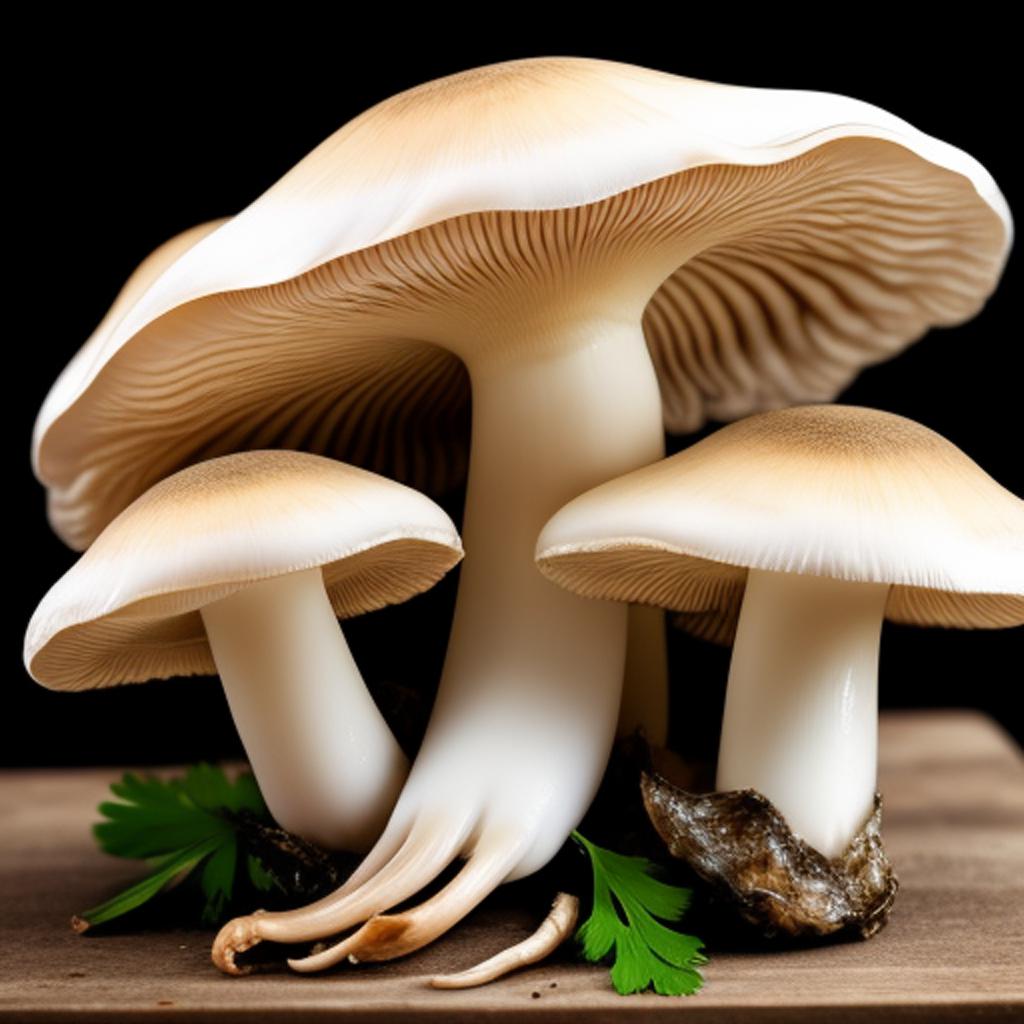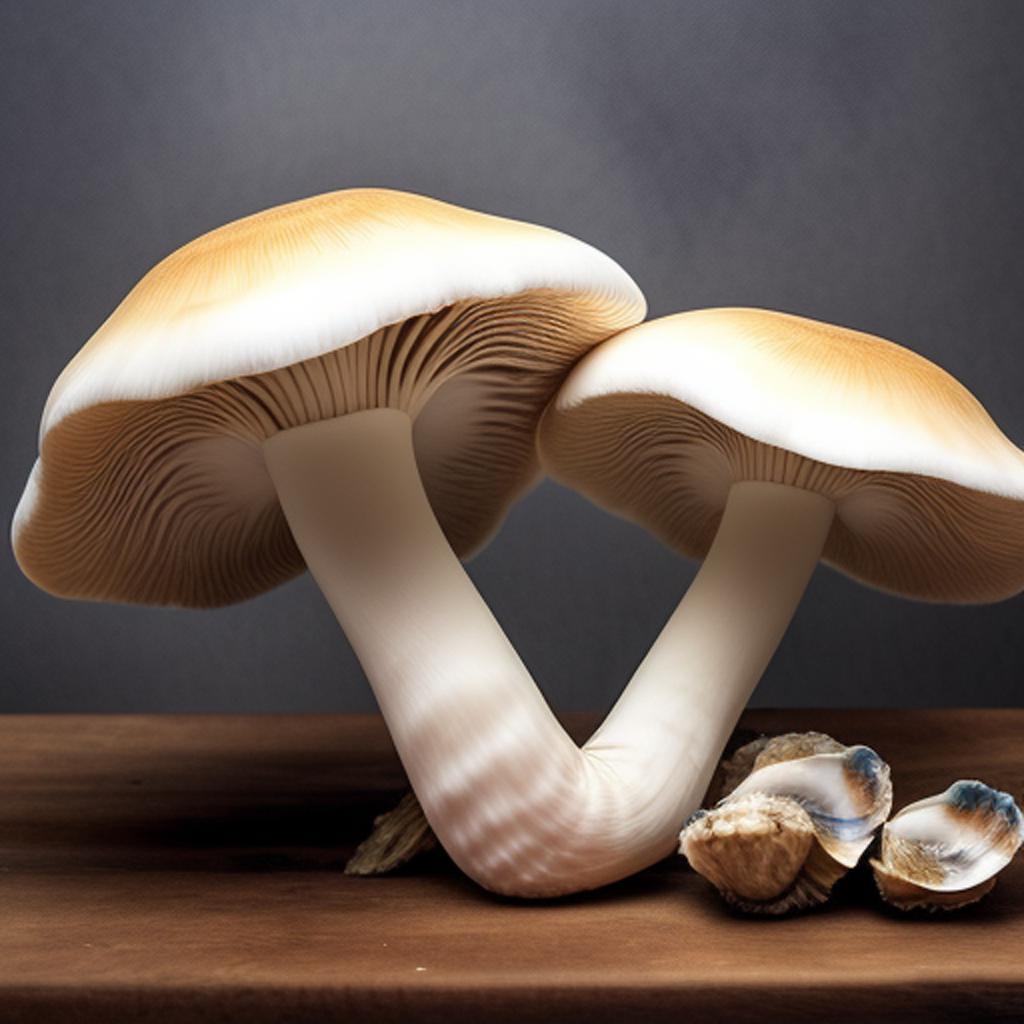Histamine intolerance is a condition that affects many individuals, causing a range of uncomfortable symptoms. If you have histamine intolerance, it’s crucial to be aware of the histamine levels in the foods you consume. In this blog post, we’ll explore whether mushrooms are high in histamine and how they can fit into your diet if you’re managing histamine intolerance. So let’s dive into the facts and uncover the truth about mushrooms and their relation to histamine.
What is Histamine?
Histamine is a biogenic amine found naturally in the body and certain foods. It plays a vital role in various physiological functions, including regulating the immune response and acting as a neurotransmitter. While histamine is essential for these processes, excessive amounts can lead to allergic reactions or intolerance symptoms in some individuals.
Definition of histamine
Histamine is a chemical compound produced by the body. It belongs to the group of biogenic amines and plays various roles within the body, including being involved in allergic reactions and immune responses. Additionally, histamine acts as a neurotransmitter in the brain.
Key points:
- Histamine is a chemical compound produced by the body.
- It is involved in allergic reactions and immune responses.
- Histamine acts as a neurotransmitter in the brain.
Functions of histamine in the body
Histamine is a biogenic amine that serves multiple functions in the body. It regulates stomach acid production, ensuring optimal digestion and nutrient absorption. Additionally, histamine promotes inflammation and aids in wound healing, playing a crucial role in the body’s defense mechanisms. Furthermore, it also plays a role in regulating sleep-wake cycles, helping to maintain proper circadian rhythm and promoting restful sleep. The body produces histamine in varying amounts to fulfill these important physiological functions.
Histamine Intolerance
Are Mushrooms High In Histamine: The Facts You Need
If you have histamine intolerance, you may be wondering about the histamine levels in mushrooms. While it is true that some mushrooms contain histamine, the overall histamine content can vary depending on the type and freshness of the mushroom. Therefore, if you have histamine intolerance, it is important to be cautious and monitor your symptoms when consuming mushrooms.
While mushrooms can provide essential nutrients and flavors to your meals, they may trigger symptoms in individuals with histamine intolerance. It’s advisable to choose fresh mushrooms and cook them thoroughly before consumption as this can help reduce their potential for triggering a reaction. Understanding how different foods affect your body is key to managing your histamine intolerance effectively.
Understanding histamine intolerance
What is histamine? Histamine is a chemical compound produced by the body that plays a vital role in various physiological processes, such as immune response and digestion.
How does histamine intolerance develop? Histamine intolerance can develop when there is an imbalance between the production of histamine and its breakdown. This can be caused by various factors, including genetics, certain medications, and deficiencies in enzymes responsible for breaking down histamine.
The role of DAO enzyme in histamine breakdown: The DAO (diamine oxidase) enzyme is primarily responsible for breaking down ingested histamine from food sources. When this enzyme is deficient or not functioning optimally, it can result in an accumulation of histamines in the body.
- Imbalance between production and breakdown.
- Genetics.
- Medications.
- Deficiencies in DAO enzyme.
Symptoms of histamine intolerance
Skin problems and rashes can be common symptoms of histamine intolerance. These can manifest as itchy hives, redness, or eczema-like patches on the skin. Headaches and migraines are another potential symptom, often accompanied by a throbbing sensation and sensitivity to light or sound. Digestive issues such as diarrhea, nausea, or bloating may also occur in individuals with histamine intolerance.
Causes of histamine intolerance
Causes of histamine intolerance include genetic factors, leaky gut syndrome, and excessive consumption of high-histamine foods. While some people may have a genetic predisposition to histamine intolerance, others develop it due to intestinal permeability issues known as leaky gut syndrome. Additionally, consuming an excess of foods that are naturally high in histamine can overwhelm the body’s ability to process it efficiently.
- Genetic factors.
- Leaky gut syndrome.
- Excessive consumption of high-histamine foods.
Histamine in Mushrooms

Uncovering the Truth
When it comes to histamine levels in mushrooms, there is a wide variation. While some mushrooms have low levels of histamine, others can contain higher amounts. It’s crucial to be aware of these differences and choose your mushroom varieties wisely.
Factors such as storage conditions and freshness also play a significant role in histamine content. Proper handling and storing techniques can help minimize histamine formation in mushrooms, ensuring their safety for consumption.
In conclusion, while some mushrooms may indeed have high levels of histamine, it’s essential to consider various factors that impact their overall content. By being mindful of these aspects, you can make informed decisions about incorporating mushrooms into your diet without compromising your health or well-being.
Histamine levels in mushrooms
Understanding the role of histamine in food allergies is crucial for individuals with sensitivities or intolerances. Histamine is a naturally occurring compound that plays a key role in immune responses, but excessive levels can trigger allergic reactions. Monitoring histamine levels in dietary choices is important to avoid potential adverse effects and maintain overall health. Mushrooms can contain varying amounts of histamine, making it essential for individuals with sensitivities to be aware of this and make informed decisions about their consumption.
Types of mushrooms with high histamine content
Exploring common edible mushrooms and their potential for high histamine:
While mushrooms are generally safe to consume, it’s important to be aware that certain varieties have the potential for high histamine content. Histamines can trigger allergic reactions in sensitive individuals, leading to symptoms like itching, hives, and difficulty breathing. Therefore, it is crucial to understand which types of mushrooms may pose a risk.
Identifying specific mushroom varieties known to be rich in histamines:
Among the mushrooms that tend to have higher levels of histamine are porcini (Boletus edulis), morels (Morchella species), and chanterelles (Cantharellus species). These popular culinary choices should be consumed with caution by those who are susceptible to histamine intolerance or allergies.
The risk associated with consuming high-histamine mushrooms:
Consuming mushrooms with elevated levels of histamines can potentially lead to adverse reactions in sensitive individuals. It is advisable for anyone prone to allergies or intolerances related to histamines not only avoid these particular mushroom varieties but also ensure proper cooking methods are employed as heat can help reduce the presence of this compound.
Factors affecting histamine levels in mushrooms
Environmental factors play a significant role in the accumulation of histamine in mushrooms. Factors such as temperature, humidity, and soil conditions can contribute to higher or lower levels of histamine. For example, mushrooms grown in warmer temperatures tend to have higher histamine content compared to those grown in cooler climates.
The aging process also influences the histaminergic properties of mushrooms. While some studies suggest that aged or fermented mushrooms may have reduced levels of histamines due to certain enzymatic reactions during the aging process, there is an ongoing debate about whether fresh or aged mushrooms are more susceptible to histamine accumulation.
The preparation methods and cooking techniques employed can impact the retention or reduction of mushroom-derived histamines. Certain cooking methods such as boiling or blanching have been found to reduce the overall level of histamines present in mushrooms. However, it is essential to note that prolonged storage and improper handling after cooking can still lead to increased levels of histamines.
In conclusion, environmental factors like temperature and humidity influence the accumulation of histamine in mushrooms. The debate continues on whether fresh or aged mushrooms are more prone to high levels of this compound. Furthermore, proper preparation methods and appropriate storage after cooking play a crucial role in reducing mushroom-derived histamines for those who are sensitive or allergic.
Managing Histamine Intolerance with Mushrooms

Mushrooms are generally low in histamine, making them a suitable option for managing histamine intolerance. However, it is important to note that some varieties of mushrooms may still contain moderate levels of histamine. To minimize the risk, opt for low-histamine mushroom options such as button mushrooms or shiitake mushrooms. Additionally, cooking techniques like boiling or sautéing can help reduce histamine levels further. It is advisable to consult with a healthcare professional for personalized guidance on managing histamine intolerance with mushrooms and other dietary considerations.
Low-histamine mushroom options
- White button mushrooms: These mild-tasting mushrooms are low in histamine, making them a safe choice for individuals with histamine intolerance.
- Cremini mushrooms:Also known as baby bella or brown mushrooms, cremini have slightly higher levels of histamine compared to white button mushrooms but are still generally well-tolerated by most people.
- Portobello mushrooms: With their meaty texture and earthy flavor, portobello mushrooms are a delicious option for those avoiding high-histamine foods.
Cooking techniques to reduce histamine levels
Blanching the mushrooms before cooking can help reduce histamine levels. This involves briefly immersing the mushrooms in boiling water, which can help to remove some of the naturally occurring histamines. Grilling or roasting mushrooms instead of sautéing them can also be beneficial, as high heat cooking methods have been shown to decrease histamine content. Furthermore, it is important to avoid using high heat for prolonged periods when cooking mushrooms, as this can cause histamines present in the fungus to become more concentrated.
Consulting with a healthcare professional
Seeking advice from a specialized healthcare professional, such as an allergist or immunologist, is essential when managing histamine intolerance. These experts can analyze your symptoms and medical history in detail to provide accurate guidance. By following their recommendations for managing histamine intolerance, you can effectively navigate dietary restrictions and make informed choices that promote better health.
Does cooking mushrooms reduce their histamine levels?
Cooking mushrooms can indeed reduce their histamine levels to some extent. Histamine is a naturally occurring compound found in many foods, including mushrooms. Some individuals may be sensitive to histamine and experience symptoms such as headache, flushing, or stomach upset when consuming foods high in histamine.
When mushrooms are cooked, the heat can help break down the histamine, leading to a reduction in its levels. However, it’s important to note that the extent of histamine reduction may vary depending on factors such as cooking time and temperature.
Studies have shown that cooking mushrooms at high temperatures for a longer duration can result in a more significant reduction in histamine levels compared to shorter cooking times at lower temperatures. For example, sautéing or grilling mushrooms at a higher temperature for a longer period may be more effective in reducing histamine content than lightly steaming or boiling them.
It’s also worth mentioning that different mushroom varieties may have varying levels of histamine. For instance, certain wild mushrooms have been found to contain higher levels of histamine compared to cultivated ones. Therefore, the potential reduction in histamine levels through cooking may differ depending on the mushroom species being prepared.
While cooking can help reduce histamine levels in mushrooms, it’s important to consider other factors that can contribute to histamine sensitivity. For instance, the freshness of the mushrooms and the conditions under which they were stored can also impact their histamine content. It’s recommended to purchase fresh mushrooms and store them properly to minimize histamine accumulation. Additionally, individuals with severe histamine intolerance may still experience symptoms even after cooking mushrooms, as the reduction in histamine levels may not be enough to prevent a reaction.
If you suspect you have histamine intolerance or are sensitive to histamine-rich foods, it is advisable to consult with a healthcare professional or a registered dietitian who specializes in histamine intolerance. They can provide personalized guidance and help you develop a suitable dietary plan.
In summary, cooking mushrooms can help reduce their histamine levels to some extent, but the extent of reduction may vary depending on factors such as cooking time, temperature, and mushroom variety. It is important to consider other factors that can contribute to histamine sensitivity and to seek professional guidance for managing histamine intolerance.
Are mushrooms considered safe for histamine intolerance sufferers?

Mushrooms and Histamine Intolerance: What You Need to Know
Histamine intolerance is a condition in which the body has difficulty breaking down histamine, a compound that is naturally present in a wide range of foods. People with histamine intolerance may experience symptoms such as headaches, hives, gastrointestinal issues, and nasal congestion when they consume foods high in histamine.
When it comes to mushrooms, it is important to understand their histamine content and whether they are safe for individuals with histamine intolerance. While mushrooms do contain histamine, the levels are generally low compared to other histamine-rich foods.
The histamine content in mushrooms can vary depending on the type and freshness of the mushroom. In general, fresher mushrooms tend to have lower levels of histamine. It is worth noting that cooking mushrooms can also reduce their histamine content. Therefore, individuals with histamine intolerance may be able to tolerate cooked mushrooms better than raw ones.
Furthermore, certain types of mushrooms may have higher histamine levels compared to others. For example, porcini mushrooms have been found to have higher histamine content than white button mushrooms. If you have histamine intolerance, it may be helpful to keep a food diary and monitor your symptoms to identify any patterns or triggers related to different types of mushrooms.
In addition to histamine, mushrooms also contain other biogenic amines such as tyramine and phenylethylamine, which can also trigger histamine intolerance symptoms in some individuals. However, more research is needed to fully understand the role of these biogenic amines in histamine intolerance.
If you have histamine intolerance and are considering including mushrooms in your diet, it is recommended to start with small amounts and monitor your symptoms closely. Keep a food diary to track any reactions or patterns. If you experience symptoms after consuming mushrooms, it may be best to avoid them or try different varieties that have lower histamine content.
It is also important to note that histamine intolerance can vary from person to person. Some individuals may be able to tolerate mushrooms without any issues, while others may need to avoid them completely. It is always best to consult with a healthcare professional or a registered dietitian who specializes in histamine intolerance to get personalized advice and guidance.
In conclusion, mushrooms can be consumed by individuals with histamine intolerance, but it is important to be mindful of their histamine content and any potential reactions. Cooking mushrooms and choosing fresher varieties may help reduce histamine levels, but individual tolerance may vary. Consulting with a healthcare professional is recommended to ensure a safe and well-balanced dietary plan.
What is the histamine content of mushrooms?
Mushrooms, a popular ingredient in various culinary dishes, contain varying levels of histamine. Histamine is a biogenic amine that is naturally present in many foods and is also produced by the body. It plays a crucial role in various physiological functions but can cause adverse effects in certain individuals, particularly those with histamine intolerance or allergy.
The histamine content in mushrooms can vary depending on the type of mushroom and its freshness. In general, mushrooms are considered to have a low to moderate histamine content. The levels can increase when mushrooms are stored for an extended period or undergo improper handling and processing.
It is essential to note that cooking mushrooms can alter their histamine content. Cooking methods such as boiling or sautéing can reduce the histamine levels, making them more tolerable for individuals sensitive to histamine. However, deep-frying mushrooms can potentially increase histamine levels due to the high temperatures involved.
Histamine intolerance is a condition characterized by an inability to metabolize histamine properly. Individuals with histamine intolerance may experience symptoms such as headaches, digestive issues, skin rashes, and respiratory problems when consuming foods high in histamine, including mushrooms.
If you have histamine intolerance or suspect you may be sensitive to histamine, it is advisable to consult with a healthcare professional or a registered dietitian. They can provide personalized guidance on managing your diet and avoiding foods that may trigger symptoms.
In conclusion, mushrooms contain varying levels of histamine, but they are generally considered to have a low to moderate histamine content. Cooking methods such as boiling or sautéing can help reduce histamine levels, making mushrooms more tolerable for individuals with histamine intolerance. However, deep-frying mushrooms can potentially increase histamine levels. It is important for individuals with histamine intolerance to be mindful of their histamine content and any potential reactions. Consulting with a healthcare professional or registered dietitian is recommended to ensure a safe and well-balanced dietary plan.
Conclusion
In conclusion, mushrooms are indeed high in histamine. Histamine is a naturally occurring compound that can have various effects on the body, including allergic reactions and inflammation. Individuals with histamine intolerance should consider limiting their intake of mushrooms as part of their dietary management plan. It is important to be aware of potential symptoms and work with a healthcare professional to identify triggers and develop an appropriate approach for managing histamine intolerance.
